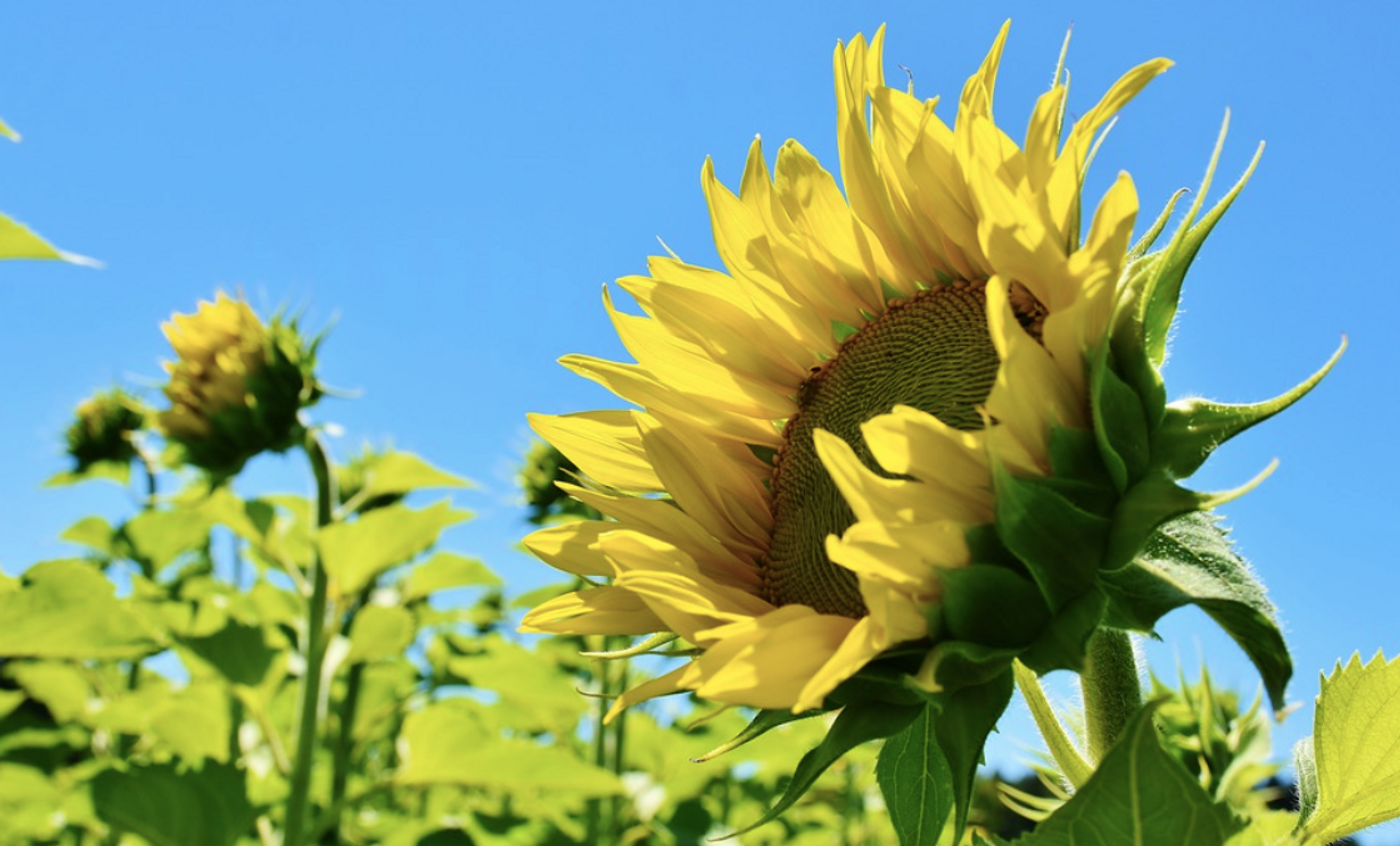How Sunflowers Can See the Sun
Sunflowers are famous for following the sun as it moves across the sky. So how do they do it? While previous work has proposed a mechanism for this movement, new work has suggested that the biological processes are different than we thought. The findings have been reported in PLoS Biology.
Senior study author Stacey Harmer, professor of plant biology at the University of California (UC) Davis noted that, "this was a total surprise for us."
There are many plants that can seek out and grow towards a source of light, a phenomenon known as phototropism. It's been thought that sunflowers use the same pathway for their own motion, which involves a molecule known as phototropin, which reacts to light wavelengths that sit at the blue end of the spectrum.
Sunflowers grow a bit more on the east side of their stem during the day, causing their heads to swing west during that time. At night, there is a bit more growth on the west side of the stem and the head goes back east. Previous research by this group has shown that the internal circadian rhythm in sunflowers orchestrates the opening of the plant's florets as pollinating insects emerge in the morning. In this work, the investigators identified the genes that are active during this daily cycle.
The researches found that when sunflowers were grown indoors, they grew straight toward the light. Genes associated with phototropin were active during this time. But sunflowers that were grown outdoors had a different gene expression pattern, and genes linked to phototropin seemed to have the same level of activity regardless of which side of the stem they grew on.
As soon as the plants that were growing inside were moving outside, they began to track the sun. This came with a major change in gene expression that did not continue after the first day. Harmer suggested that this was indicative of a kind of rewiring.
Shade boxes that blocked different wavelengths of light did not affect the sunflowers' response to light, which seems to suggest that there are several pathways that react to different light wavelengths, achieving the same effect.
While new pathways for plant growth and light-sending in plants have been identified, the genes that are related to heliotropism, which is the sunflower's ability to move in response to the sun, have not been found yet.
"We seem to have ruled out the phototropin pathway, but we did not find a clear smoking gun," said study co-author and postdoctoral researcher Hagatop Atamian. Next, the researchers are planning on assessing protein regulation in these plants.
Sources: UC Davis, PLoS Biology









